Note
You are not reading the most recent version of this documentation. See the latest version available.
Capturing in the Windows Sandbox¶
Capture all the changes to the local drives, registry, services and other areas of the sandboxed Windows OS environment.
The changes can be made by an existing installation (like a black-box EXE) or by the user’s actions (like copying files, importing .REG to the system registry, changing app settings).
The captured resources will be automatically transferred from the Windows Sandbox to specified project location via the host, where the capturing wizard is run.
Attention
Windows Sandbox is a built-in Windows OS feature that provides a temporary desktop environment to safely run applications in isolation. Software installed inside the Windows Sandbox environment remains “sandboxed” and runs separately from the host machine.
- Run PACE Suite Launcher either from the Start Menu or Desktop shortcut on your work station (PC).


- Click Repackage in Windows Sandbox in the Tasks > Packaging group.
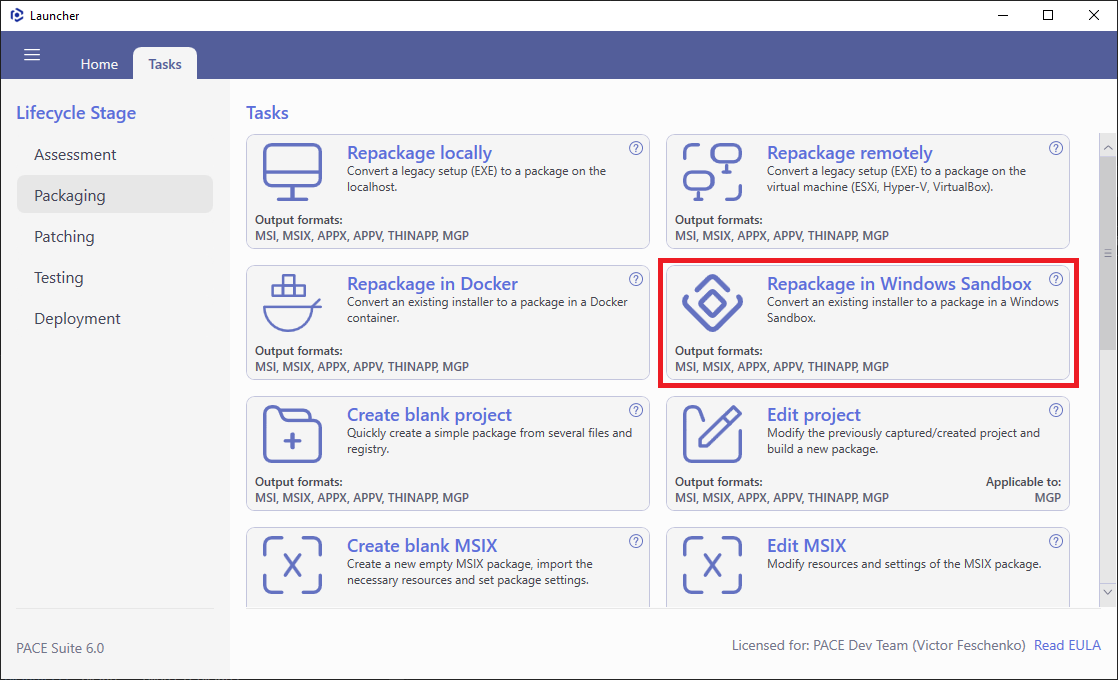
- The wizard checks whether the Windows Sandbox OS features is enabled. If not so, click Enable to automatically enable Windows Sandbox.
Note
After enabling Windows Sandbox, be sure to restart your computer.
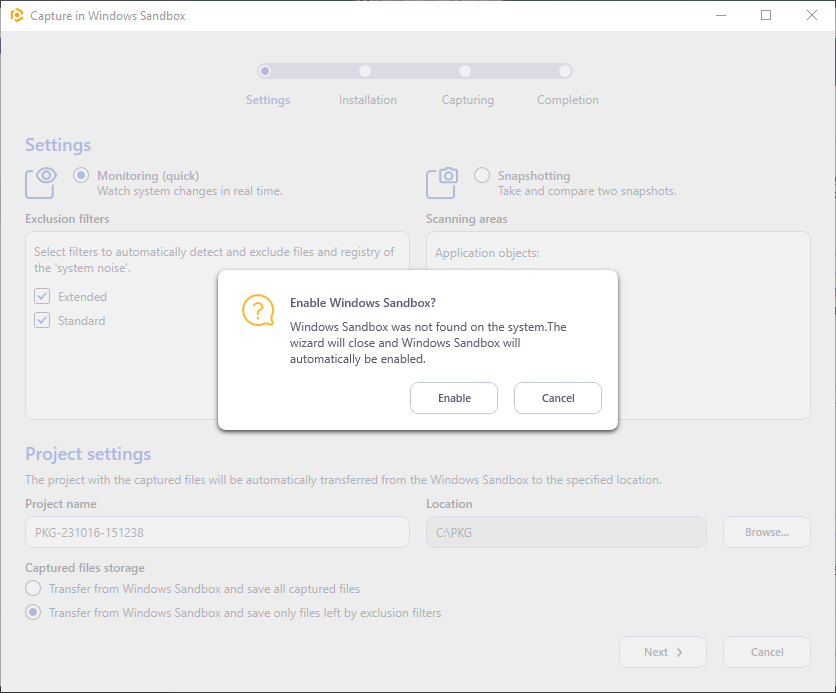
- Select the capturing method, project name and its location. Choose exclusion filters that will be used to detect and filter out the unnecessary resources. Then, click Next >.
Use Monitoring method for the quicker capturing.
Use Snapshotting method for capturing huge installations.
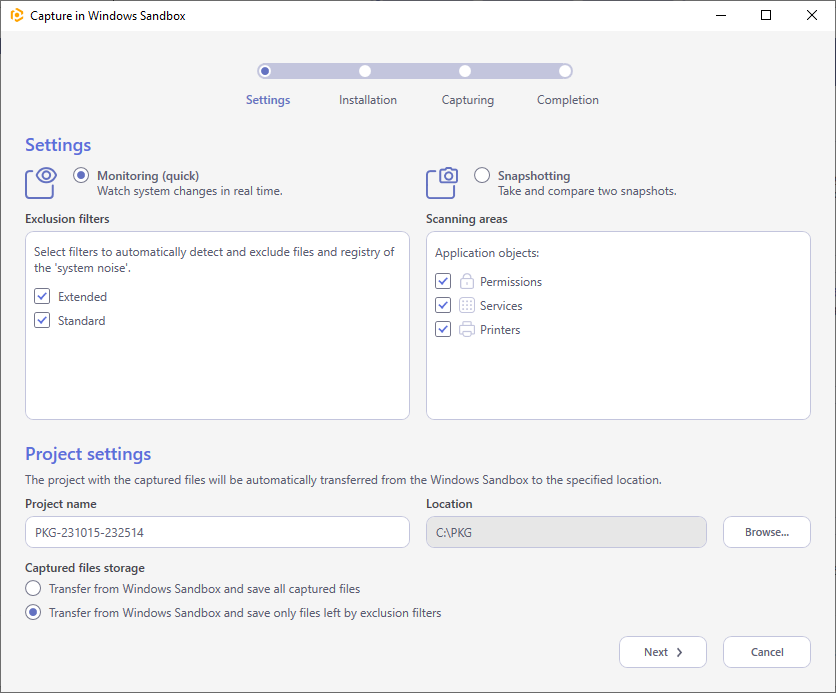
- Select the installation processing mode, installer and its related files to transfer to the Windows Sandbox and click Next.
In the Manual mode, the wizard will pause after the pre-install scan to allow you to install any set of apps, change the required app settings and make any system changes that you need to capture and include in the package. If you need to install or configure prerequisites before capturing, tick the Pause process to fulfill prerequisite option.
In the Automated mode the wizard runs the specified Installer with Unattended mode arguments between the pre-install and post-install scans. The post-install scan runs once the installer process is ended.
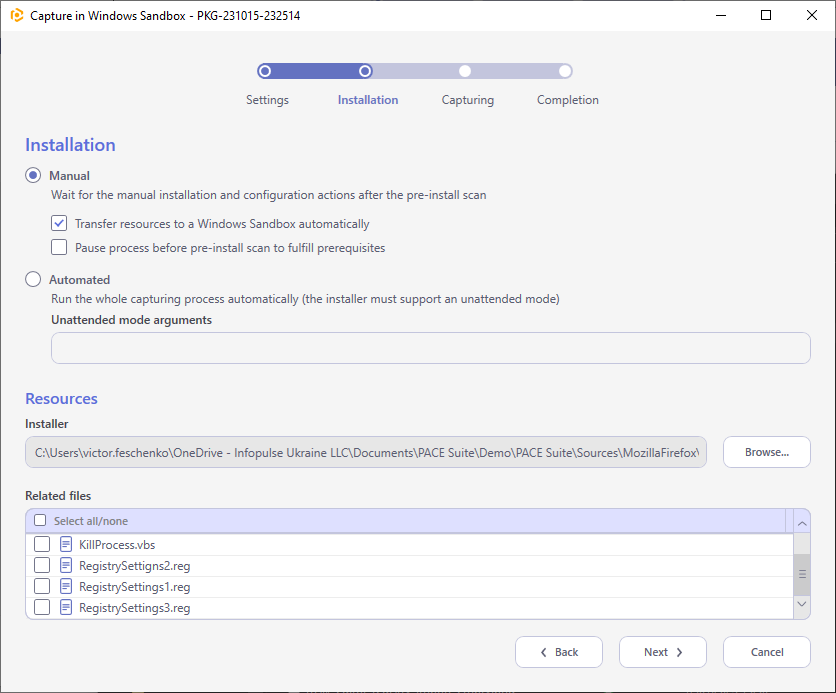
- If you have selected the Manual mode:
Wait while the Windows Sandbox is getting ready and pre-install scan are made.
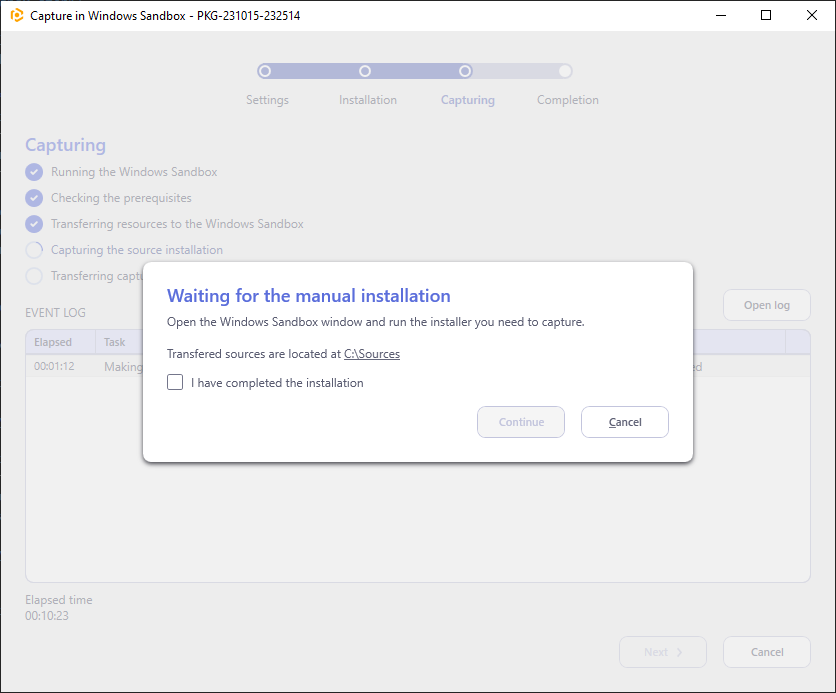
Switch to the launched Windows Sandbox and navigate to the
C:\Sourcesfolder. There you will find the specified source installation.
Run and complete installers of apps that you need to capture. Also at this stage you can make any system changes that you need to capture along with apps.

When finished, switch back to the capturing wizard, tick I have completed the installation and click Continue.
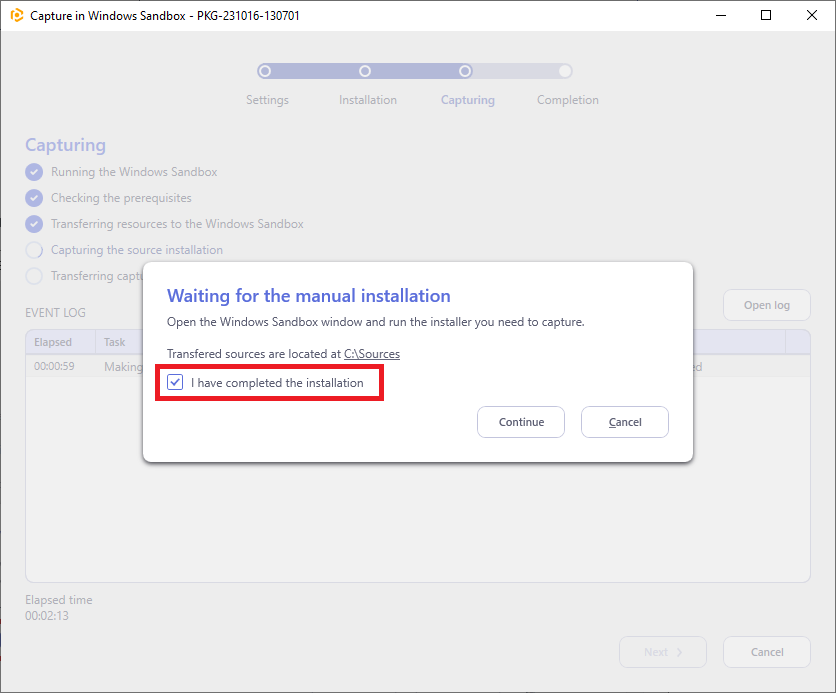
- Capturing is completed. Click Finish to close the wizard. By default, the created capturing project will be opened for editing and the Windows Sandbox be closed.
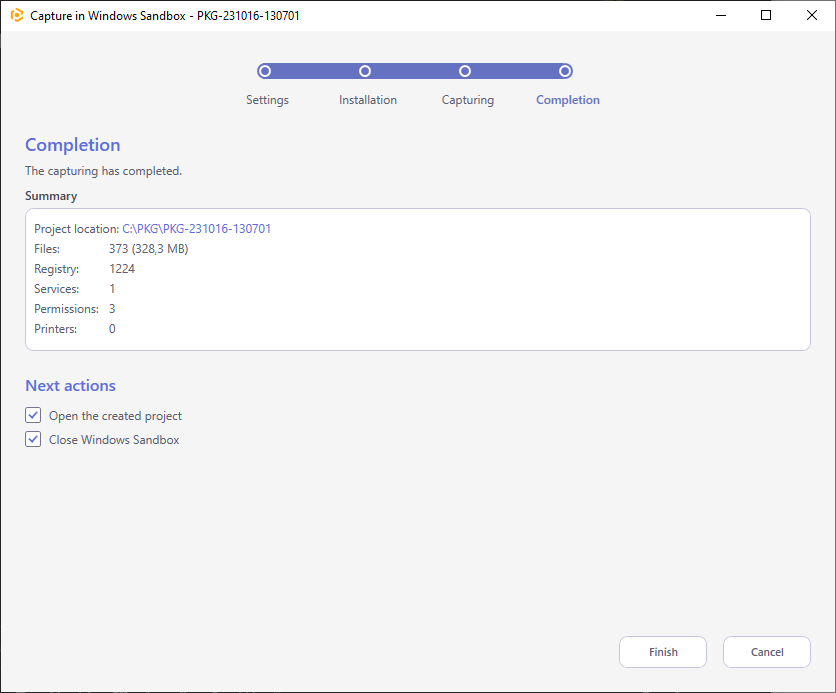
Note
If the capturing Summary contains the detected ‘vendor’ MSI packages, consider editing them via transform (MST) instead of repackaging. Repackaging of the existing vendor MSI into a new MSI may lead to losing the original business logic.
Example:
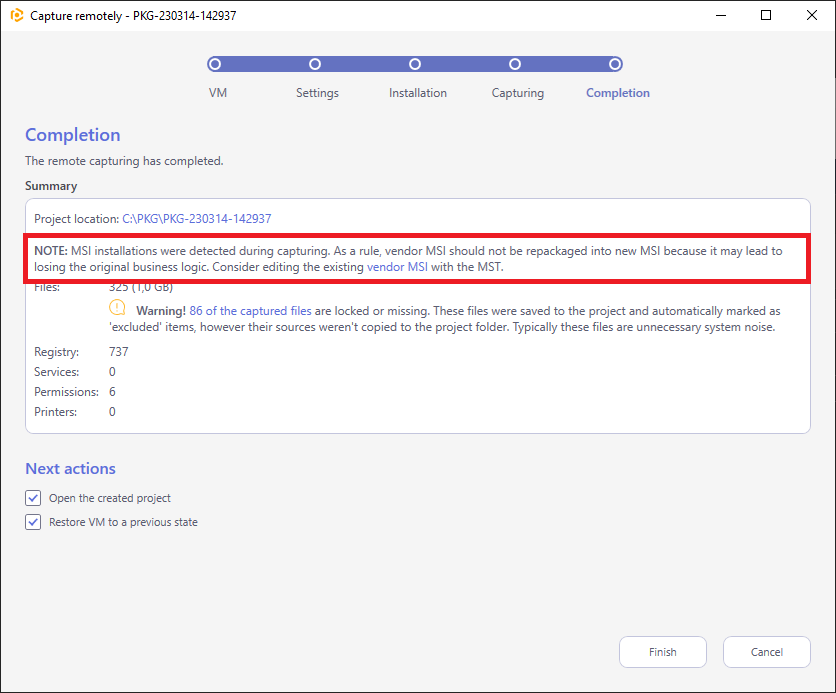
Note
PACE Suite covers the whole range of application packaging tasks - learn more.
Try PACE Suite for free - 21 days no obligations unlimited trial with all functions unlocked.
